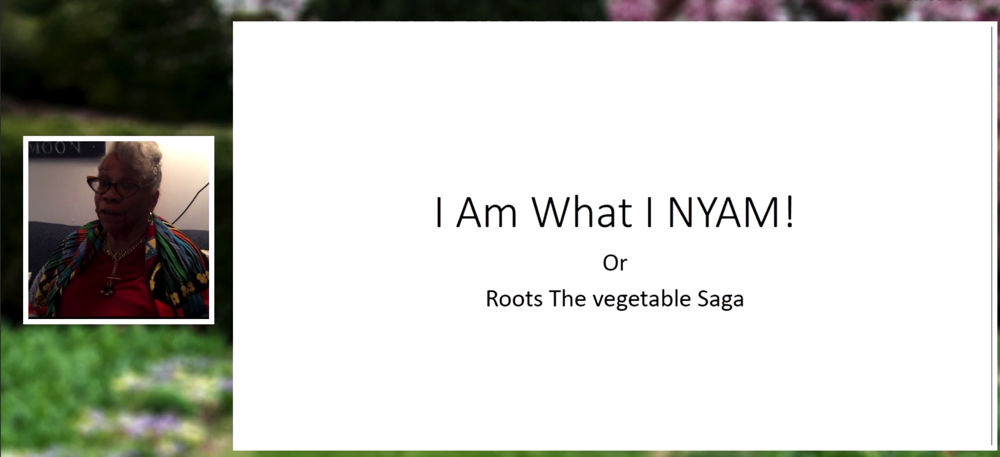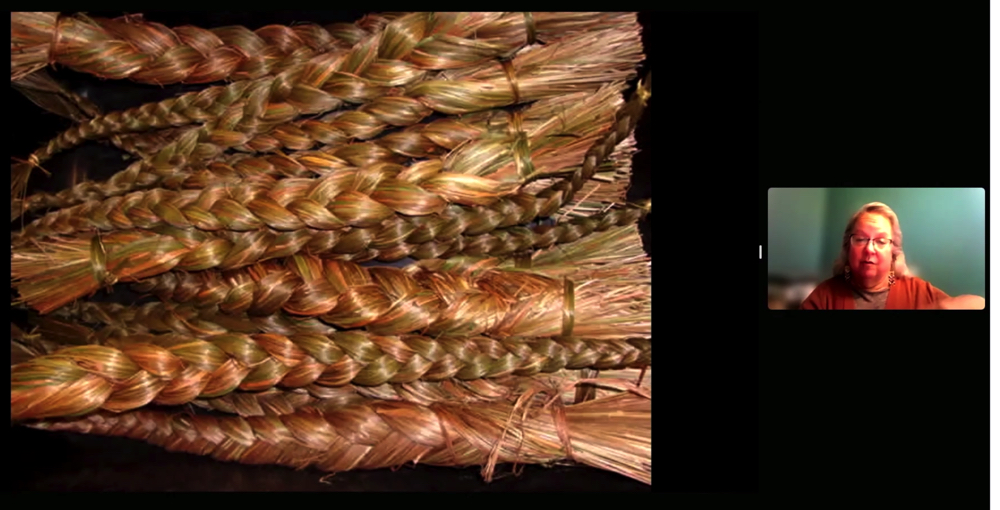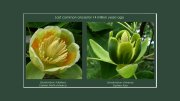Often overlooked, plants are arguably the most indispensable inhabitants of the planet. They absorb carbon dioxide and release oxygen that supports life. They provide basic human necessities, including food, clothing, and shelter. And in communion with people, they have functioned as medicine, inspired art, and sparked scientific exploration. Empires have risen on their fruits, and fortunes have been made from their fibers. In these intersections with human culture, plants tell stories about people—about ingenuity and power, poetry and oppression.
Some of those stories were retold at Harvard’s Dumbarton Oaks Research Library and Collection on September 15 to 17 as part of a three-day conference dedicated to the “plant humanities.” The setting, the site of the famous Beatrix Farrand-designed gardens in Washington, D.C., was a fitting one, not least because Dumbarton Oaks is also home to the Plant Humanities Lab, a project to document the cultural histories of plants online.
“[P]lants,” said Dumbarton Oaks executive director Yota Batsaki by way of introduction, “are having a moment….Their growing prominence in the work of scholars and artists is surely linked to the urgency of accelerating extinctions, alongside the slow violence of climate change and the spread of invasive species that render plants crucial indicators of change, collapse, and resilience,” she continued. “If we think about our asymmetrical dependence on the photosynthetic world, it is clear that humanists as well as scientists should be concerned by the fact that two out of five plants are threatened with extinction due to anthropogenic changes to the planet’s life systems. We depend on plants for all our bodily needs: breath, nourishment, healing, shelter, and pleasure,” she said. “So, when we explore the intricate histories of plants and people, we are reminded of our own embeddedness within multi-species relations….”
Around this uniting theme, participants learned, for example, about how plants tell stories in museums and collections, how confusion over what to call a tuber sheds light on the history of slavery in the United States, and how some plants need people to thrive.
Felix Driver, a professor of human geography at the University of London, explained how historians have begun to rethink the collections at Kew, the royal botanic gardens in the United Kingdom, as a museum of biocultural heritage. “We now have a much better understanding of the history of this museum,” said Driver. “For example, we know that the museum worked closely with the manufacturers and traders in Britain, as well as museums and gardens across the Empire and beyond. Over the years, Kew acquired not only large numbers of specimens”—Kew houses the world’s largest and most diverse botanical and mycological collections, more than 8.5 million items—“but large numbers of plant-derived artifacts, including medicines, papers, baskets, clothing, and ceremonial objects, more usually associated with museums of world cultures today.”
Focusing on just one imported product, lime juice, brought by the thousands of barrels into the port of Liverpool from the Caribbean, Driver explained how collections ranging “from living plants to dried fruit, plaster models, ingenious tools, plantation labor, processed materials, and finished products” reveal “something of the process of resource extraction, how it was understood and represented in the age of empire.”
Arnold professor of organismic and evolutionary biology William “Ned” Friedman, director of the Arnold Arboretum, spoke about a different kind of treasure: Harvard’s living collection of trees and shrubs in Jamaica Plain. He traced the evolutionary geography of a few plants across millions of years. And he touched on the stories of plant exploration that led to modern reunions of long-separated branches of related species in the landscape of the Arboretum’s collections, such as the tulip trees of Eastern Asia and Eastern North America, which last shared a common ancestor 14 million years ago.

Culinary historian Jessica Harris, a professor emerita at Queens College, City University of New York, explained in a presentation subtitled “Roots, the Vegetable Saga” the difference between a yam (Old World) and a sweet potato (New World).
Screenshot by Harvard Magazine
Culinary historian Jessica Harris, a professor emerita at Queens College, City University of New York, explained in a presentation subtitled “Roots, the Vegetable Saga” the difference between a yam (Old World) and a sweet potato (New World). The two tubers are frequently mistaken for each other, and sometimes mislabeled in grocery stores, but “This confusion,” she said, “only exists in the English-speaking world.” The word “yam,” she explained, is derived from the West African “nyam”, which when used as a verb means “to eat;” used as a noun it means “food.” That many people get rough-skinned yams and smooth-skinned sweet potatoes confused is a legacy of slavery, since yams, which are native to Africa, were an important culinary staple there. Slaves brought from Africa to the New World, deprived of this familiar food, realized that sweet potatoes were a reasonable substitute tuber, and called them “Nyam.”
Ecologically significant human interactions with plants were the subject of a talk by Robin Kimmerer, a professor at the State University of New York College of Environmental Science and Forestry, and a member of Citizen Potawatomi Nation. She spoke about Native Americans’ relationships with a variety of different species. The history of maize, hybridized from grasses during many generations, is well-known. But Kimmerer, who is involved in the ecological restoration of culturally important plants, focused on the story of sweetgrass. In Native American culture, she explained, sweetgrass is a sacred, ceremonial plant “by which we are reminded of our obligations for kindness and compassion.” She said that in her research into the restoration of sweetgrass to indigenous territories from which it had disappeared (the result of land-use changes), she and her students found that simply reintroducing the plant to a former habitat was not enough to ensure its reestablishment. Instead, sweetgrass “thrives best when you also restore cultural relationships. In our experimental plots,” she said, “sweetgrass that was harvested” according to the traditional cultural protocol “flourished, and in fact doubled its population size. For me,” she said, “this is emblematic of the notion that [ecological] restoration is not just restoration of vegetation, but restoration of a relationship” between plants and people.

Sweetgrass
Screenshot by Harvard Magazine
Many of the speakers told plant stories that involved human subjugation. Well-known grains and foods, such as millet, sorghum, sesame, black-eyed peas, and watermelon, were African crops introduced in the plantation societies of tropical America, often by slaves. These slaves even used certain other plants to induce abortion, not wanting to bear children who would grow up enslaved.
On the conference’s final day, W. John Kress ’75, vice-president of science at the Smithsonian’s National Museum of Natural History, spoke about the current state of plant exploration and the troubling scale of human impacts on the natural world. There are an estimated 35,000 plant species yet to be discovered. At the same time, within known species, new technologies of genetic analysis have deepened human understanding of plant biodiversity, enabling researchers to discern even distant evolutionary relationships among species.
But this positive trajectory of discovery is more than matched by “seven major things,” he said, that humans, “a single species, are imposing on the rest of the planet.” These impacts include destruction of natural habitats; exploitation of species (including for medicine and timber); pollution of air, land, and sea (“Plastic is a big issue”); changes to climate caused by greenhouse gases; the rapid spread of invasive species; urban growth; and the dissemination of diseases that affect plants and other organisms. The result, he said, is that 572 plant species have been driven to extinction already, and an estimated one million more species of plants, animals, fungi and microorganisms are at risk. Among the efforts Kress mentioned that aim to prevent this mass extermination are “30 by 30”, a non-governmental organization which aspires to permanently protect “30 percent of the planet’s marine and terrestrial environments to attempt to save a lot of this biodiversity”; and a longstanding, parallel effort by the United Nations Convention on Biological Diversity (begun in 1992), which will convene a biodiversity conference in Montréal in December. The stated objective is to establish goals that will “guide global action through 2030 to halt and reverse nature loss.”
What the plant humanities can contribute under this threat is the larger question that the three-day symposium sought to probe. As Batsaki put it, “The plant humanities, as a branch of the environmental humanities, require…tools and methodologies from history, the history of science and medicine, the history of art, literary studies, critical plant studies, ethnobotany, plant science, environmental science and a host of other disciplines.” The question? “[I]s there something transformative that happens when different discourses and methodologies converge…” in humanity’s current “social and environmental predicament? Can we come up with new research questions, new ways of co-teaching and communicating the importance of plant-human relationships…?” The conference, she said, “is a next step in exploring the potential of plant humanities to wrestle with these urgent questions that defy disciplinary boundaries.…We are nowhere near answering this question of whether a synthesis can lead to transformation.”
A sampling of plant cultural histories and their influence on human societies can be explored on the website of the Plant Humanities Lab, which was developed by Dumbarton Oaks in collaboration with JSTOR Labs, (a non-profit organization that develops technologies for educational use), with funding from the Mellon Foundation.








